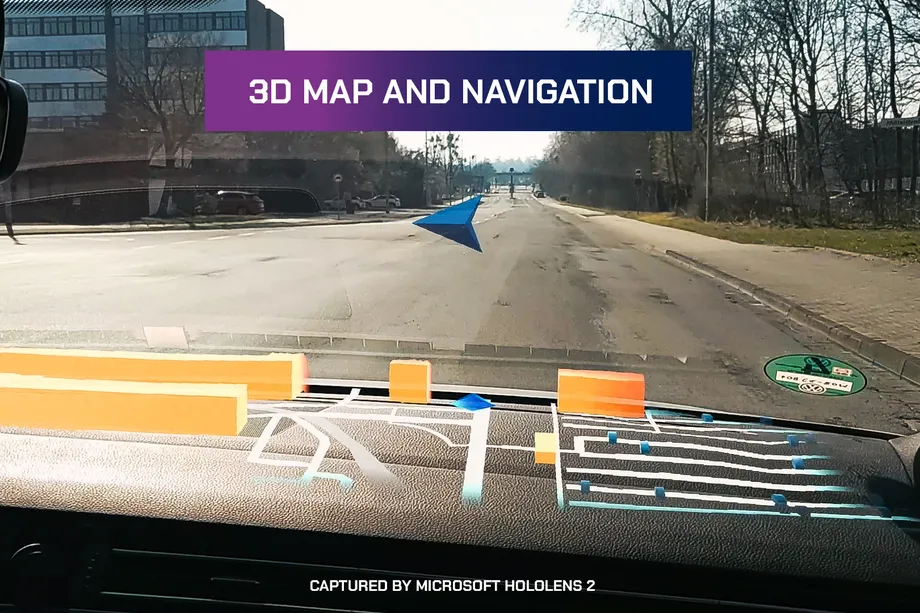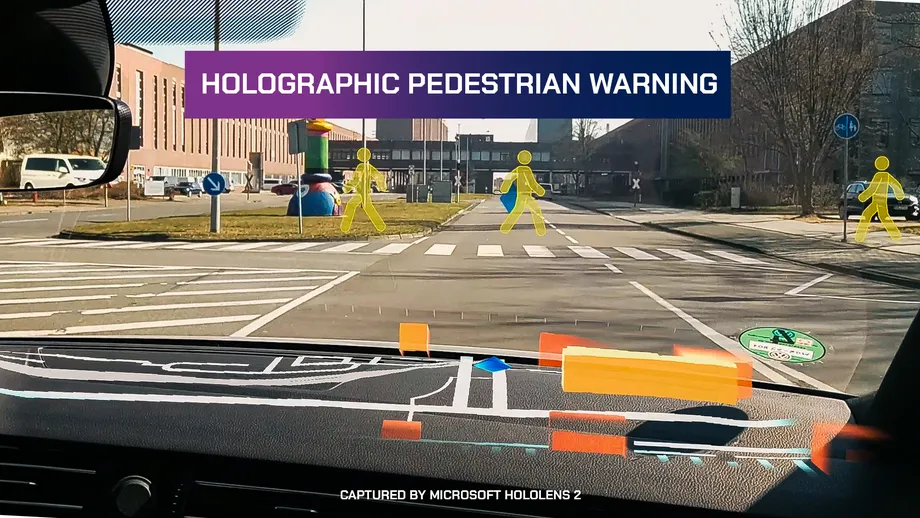Microsoft officially announced a new "mobile platform" feature of hololens 2, which aims to make this augmented reality head display work in places such as cars It solves a long-standing problem in hololens, that is, the mobile environment will confuse the sensors of the head display. The improvement was developed in cooperation with Volkswagen, which has been trying to integrate the technology of the head display into the car's head up display in its vehicles.

As explained in Microsoft's blog post, its augmented reality head display uses a combination of camera sensors and inertial measurement units (usually accelerometers and gyroscopes) to track motion. But in the car, the readings of the two sensors may conflict; The head display senses movement, but sees a static environment. In other words, he is carsick (don't laugh, it is).
This is what Volkswagen found after it began investigating the use of augmented reality head display technology to teach drivers how to drive faster on the track. In 2018, it began to cooperate with Microsoft to solve the sensor problem. Finally, the two sides cooperated to develop a prototype system that allows cars to display real-time information in the form of AR.

The system can place virtual objects inside and outside the vehicle. A picture released by Microsoft (above) shows that hololens 2 project the virtual map onto the dashboard of the car. At the key intersection, the navigation arrow appears in the front. The second picture shows that it reminds the driver to pay attention to the upcoming pedestrian crossing.
Volkswagen's existing cars have integrated some augmented reality elements. The recently popular ID series electric vehicles have an augmented reality head up display, which can project the car's data, including current speed and navigation instructions, onto the windshield, so that the driver can see it more easily without removing his eyes from the road.
Given that Microsoft has firmly targeted the $3500 hololens 2 at enterprise users, there is no sign that it will be promoted among consumers soon. It just said that it is interested in consumers' use "in the long run". Instead, Microsoft suggests that the first beneficiaries of the new features may be maritime companies, which can connect workers with remote mechanical experts, who can diagnose problems through workers' hololens 2.
Perhaps most importantly, it is clear that Microsoft is still actively developing its augmented reality head display platform, despite reports that the project encountered difficulties earlier this year. It is reported that the company has lost 70 employees from the hololens team in the past year, of which more than 40 went to meta to support its attempt to transform into a metauniverse company.